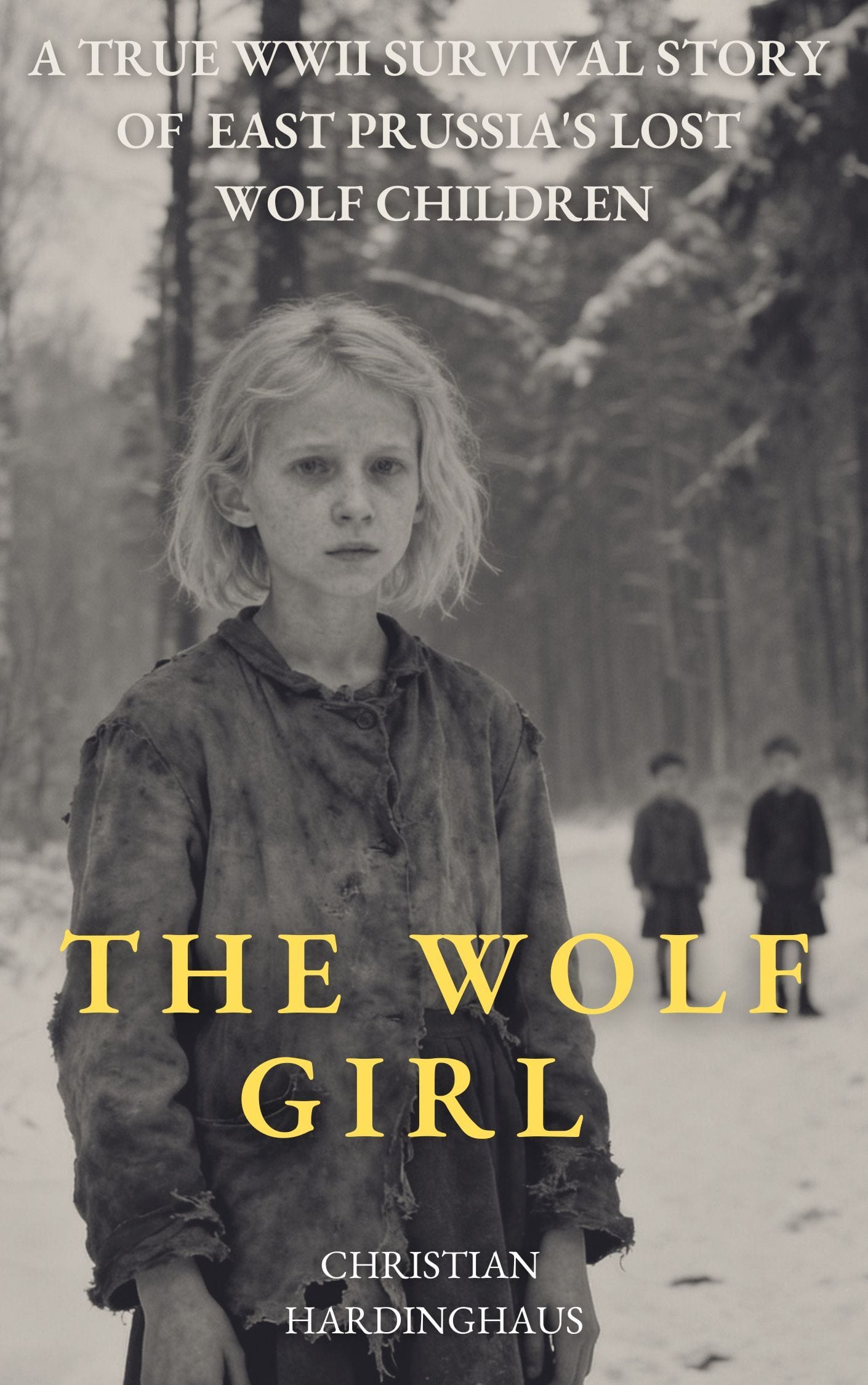The Wolf Girl: A True WWII Survival Story of East Prussia’s Lost Wolf Children
A forgotten WWII survival memoir of a displaced East Prussian girl—one of the last so‑called wolf children (Wolfskinder) navigating Soviet-occupied Lithuania after 1945.
The Forgotten Wolf Children of East Prussia
This is the extraordinary true story of the wolf children (Wolfskinder)—the largely forgotten German orphaned and semi-orphaned children of the World War II aftermath. After Germany’s defeat, thousands of stranded minors roamed a devastated borderland, scavenging for food, bargaining for shelter, and dissolving their identities to survive.
The Untold Tragedy of the Lost Children
In the vacuum that followed capitulation, an estimated multitude of East Prussian children wandered alone. Some were as young as four—frightened, malnourished, and invisible to official aid. Ursula smuggled herself aboard a Russian freight train to Lithuania, where compassionate local families covertly sheltered starving German girls and boys at personal risk.
From One Conflict Into Another
The children escaped one war only to enter a covert one. Soviet-occupied Lithuania was a contested landscape where Lithuanian partisans waged a dangerous guerrilla struggle. In forests where wolf children hid, night gunfire echoed. Every knock at a farmhouse door could spell exposure. Discovery by Soviet patrols as “German fascist children” threatened deportation to distant labor camps.
Forced to Live Like Wolves
As persecution intensified, children retreated deeper into forest margins; they slept in barns, root cellars, and thickets. They adopted Lithuanian names, improvised new linguistic identities, and buried their German past to stay alive—embodying the feral resilience that led locals to call them “wolf children.”
Inside You Will Discover
- A child’s view of a collapsed province after the fall of Königsberg
- Nights hiding from partisans and Soviet patrol sweeps in contested forests
- Terror of potential deportation and families torn apart
- Fragmented names, forged identities, and the price of self-erasure
- The invisible war after the war: hunger, cold, shame, secrecy
- A decades-long silence finally—and carefully—broken
What Makes This WWII Memoir Different
This narrative does not sensationalize. Grounded in extensive interviews with Ursula Dorn, now in her nineties, The Wolf Girl breaks silence around an overlooked postwar chapter. Historian Christian Hardinghaus places one fragile life within a rigorously contextualized frame—balancing testimony, archival method, and ethical restraint.
For Readers Who Appreciated
- The Pianist
- The Nightingale
- All the Light We Cannot See
- The Girl Who Escaped from Auschwitz
About This Edition
This English edition brings Ursula’s account to international readers. The original German reception helped surface voices long forced into silence—offering a sobering lens on postwar displacement, identity erasure, and child endurance under occupation.
A testament to resilience—and to the forgotten children who survived by vanishing into a war history nearly erased.
Read the True Story
Order The Wolf Girl now and uncover a rarely documented chapter of World War II’s human aftermath.
Frequently Asked Questions About the Wolf Children
Who were the “wolf children” (Wolfskinder) after World War II?
They were primarily German-origin orphaned or displaced minors from East Prussia who crossed into Soviet-occupied Baltic territories—many hiding identities to survive hunger, patrols, and political suspicion.
Why did East Prussian children flee toward Lithuania?
Lithuanian rural households—despite risk—sometimes exchanged shelter or food for labor, offering better survival odds than devastated, famine-stricken urban ruins.
What dangers did they face under Soviet occupation?
Starvation, exposure, denunciation, forced identity changes, fear of deportation, and being trapped amid guerrilla conflict between Lithuanian partisans and Soviet security forces.
Is The Wolf Girl historically verified?
The memoir is based on recorded interviews, contextual cross-checking, and transparent narration distinguishing personal memory from broader historical framing.




